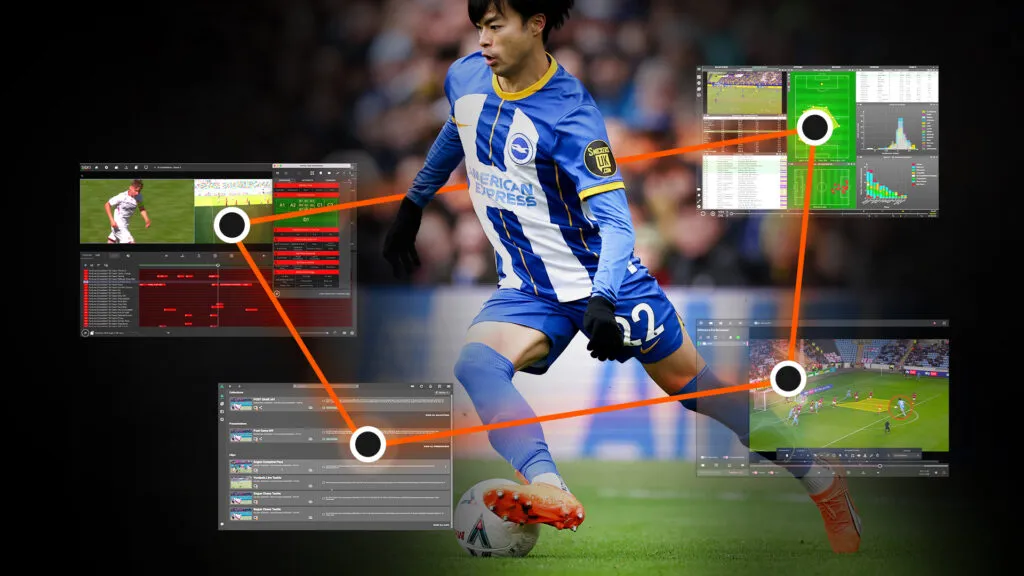The lines separating the actual and virtual worlds are becoming increasingly hazy in 2025, particularly in the sports industry. Welcome to the era of phygital sports, where traditional athletic experiences are being seamlessly fused with immersive technology to create a hybrid form of entertainment, competition, and fan engagement.
No longer confined to stadiums or living rooms, phygital sports are transforming how athletes train, how fans interact, and how the next generation plays and watches the game. Whether it’s AI-powered performance analysis, augmented reality-enhanced games, or esports arenas with physical movement sensors, phygital is the future—and the future is now.
Let’s dive into the trend that’s changing the game in 2025.
What Are Phygital Sports?
The term “phygital” combines physical and digital—a fusion of tangible real-world experiences with virtual or digitally enhanced environments. In the context of sports, phygital refers to activities, competitions, and fan interactions that blend:
- Real physical performance
- Digital scoring, avatars, and AI integration
- Virtual environments, sensors, or augmented elements
Phygital sports retain the physicality of traditional sports while incorporating the tech-driven dynamics of digital platforms. The result? A multi-sensory, interactive, and borderless experience that appeals to both athletes and digitally native audiences.
Why 2025 Is the Tipping Point
Several factors have converged in 2025 to create the perfect storm for the rise of phygital sports:
- 5G and edge computing have drastically reduced latency, allowing real-time digital feedback in physical settings.
- Wearable tech and biometric sensors are more advanced and affordable than ever, powering real-time data collection and analysis.
- Virtual reality (VR), augmented reality (AR), and mixed reality (MR) are becoming mainstream, especially among Gen Z and Gen Alpha consumers.
- The lines between esports and traditional sports are blurring, with athletes, brands, and fans all seeking hybrid experiences.
- Post-pandemic fitness and sports culture now emphasize at-home interactivity, digital community, and gamification.
From smart stadiums to digital fan engagement platforms, phygital experiences are becoming a core offering, not a niche gimmick.
Examples of Phygital Sports in Action
1. Tech-Enhanced Competitions
Tournaments like TechBall League, launched in late 2024, feature real athletes competing in AR-enhanced arenas. Their real-time movements trigger digital effects—think scoring zones that light up, holographic defenders, or crowd reactions synced with gameplay.
These sports blend motion tracking, AI scoring systems, and digital overlays, creating a sport that’s as physical as football and as visually dynamic as a video game.
2. Smart Equipment and Training
Athletes now train with phygital tools:
- Smart basketballs that track dribbles, shots, and spin rates
- AR glasses that display performance indicators in real time during training
- Connected turf or courts that analyze foot placement, speed, and angles
AI coaches, often integrated with wearables, give feedback on form and strategy mid-session—whether you’re an amateur tennis player or an elite soccer star.
3. Phygital Esports Arenas
Esports is also evolving. Games like HADO, a Japanese AR dodgeball-style esport, require players to physically dodge, jump, and launch virtual energy balls while wearing headsets. It’s fast, physical, and immersive, blurring the line between gaming and athletic performance.
In 2025, countries like South Korea, the UK, and the UAE are building phygital arenas where real-world movement and digital game worlds coexist.
4. Immersive Fan Engagement
Fans are now part of the action:
- Wearables let stadium spectators feel haptic feedback when their team scores.
- At-home viewers can interact with digital twins of players via AR apps.
- Live sports offer choose-your-camera-angle features, AR stats overlays, and fan-controlled content, putting control in the audience’s hands.
Phygital fan engagement is personal, interactive, and constant, turning spectators into participants.

Sports Going Phygital: Who’s Leading the Way?
Football (Soccer)
Major clubs like Manchester City and FC Barcelona now offer phygital fan zones with AR content, digital collectibles (NFTs), and gamified loyalty programs. In order to provide analysts and fans with real-time performance feedback, players don smart kits.
Basketball
The NBA has embraced phygital with smart courts, AI cameras, and virtual reality replays. Fans can also interact with players’ digital avatars, watch real-time stat projections, and use wearables synced to in-game action.
Tennis and Golf
These precision sports use AR coaching, sensor-enabled racquets and clubs, and digitally enhanced replays to improve player feedback and enrich broadcast experiences.
Combat Sports
Mixed martial arts and boxing now use VR sparring simulations, motion-tracked training for injury prevention, and real-time fan interaction via AR scorecards and live commentary feeds.
The Business of Phygital Sports
Phygital sports are not just redefining entertainment—they’re becoming a major industry driver. Global investments are flooding into startups that build:
- Motion capture gear for consumer athletes
- Mixed-reality sports platforms
- Smart sportswear and sensor-embedded equipment
- Phygital fan engagement tech and apps
Digital-native monetization options, such as NFTs, digital collectibles, metaverse integrations, and exclusive augmented reality experiences, are being sought after by brands, sponsors, and leagues.
Revenue streams are expanding to include:
- In-game microtransactions and upgrades
- Virtual seat sales and exclusive camera feeds
- Interactive merchandise linked to player data
- Digital twin licensing for games and ads
In short, the business of sports is no longer just ticket sales and jerseys—it’s becoming a hybrid ecosystem of physical performance and digital immersion.
Related Blog: Women’s Wrestling Shines Bright at WWE Evolution 2025
Challenges Ahead
Despite the momentum, the phygital boom comes with hurdles:
- Privacy concerns around data collected by smart gear and fan interaction tools
- Equity gaps, as phygital sports may exclude those without access to advanced tech
- Athlete burnout, due to constant tracking and data scrutiny
- Regulatory uncertainty, especially in new categories like mixed-reality betting and AI-enhanced officiating
To succeed long-term, phygital sports must balance innovation with inclusivity, privacy, and fairness.

The Future of Phygital Sports
Looking ahead, we can expect:
- AI referees and commentators that interact with fans during live games
- Decentralized leagues where fans vote on team strategies or player selections
- Wearable-integrated social fitness platforms where users compete phygitally in global challenges
- Metaverse-ready teams with real and virtual rosters
Schools and youth programs are even introducing phygital PE (Physical Education), training the next generation in tech-integrated fitness from a young age.
In 2025, phygital is more than a buzzword. It’s the blueprint for the future of sport—more immersive, more connected, and more engaging than ever before.
Final Thoughts: Not Just a Trend, a Transformation
The phygital sports boom is not just changing how we play and watch games—it’s redefining what sport even means. As the digital and physical worlds fuse, sport is becoming more accessible, more creative, and more personalized.
Whether you’re a fan, an athlete, a coach, or a brand, 2025’s biggest message is clear: The future of sports isn’t just about strength or skill—it’s about integration.




